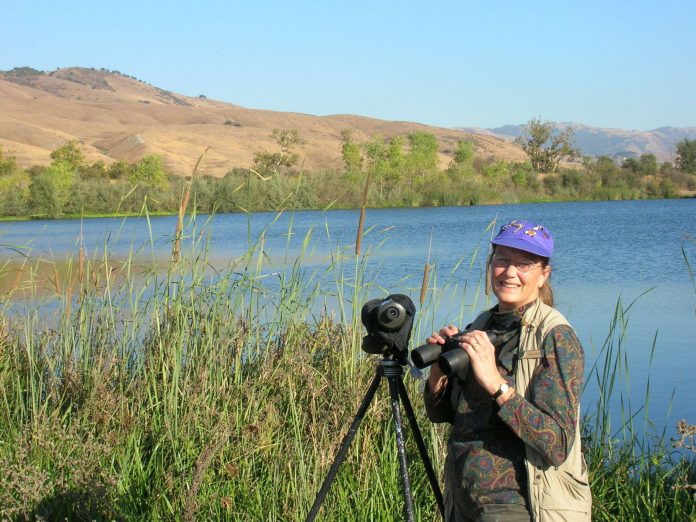
<
The South Bay is abundant with an astonishing variety of avian life. The captivating hobby of birdwatching allows you to discover and appreciate the marvelous diversity of wildlife all around us. At the water’s edge you may see a majestic Great Blue Heron or a reclusive American Bittern; you will learn how to tell the difference between Great and Snowy Egrets; you might be surprised by a crested blue-and-white Belted Kingfisher suddenly diving into the water and emerging with a fish.
<
Paddling on a creek or pond, you may see Buffleheads (striking black and white ducks) or an elusive, stunningly multi-colored Wood Duck. Take a walk among the trees and fields—listen closely for Acorn Woodpeckers tap-tapping acorns into an oak tree and Steller’s Jays raucously mimicking other birds; watch Northern Flickers foraging on the ground for ants and Tree Swallows swooping in the air for insects.
<
Be inspired by the thrilling sight of both large and small raptors soaring in our skies: Golden Eagles, Red-Tailed Hawks, and falcons such as Peregrines and Kestrels. You will even discover that not all kites in the sky have strings attached—the White-Tailed Kite hovers in the air while scanning for a tasty rodent on the ground.
<
The hobby of birdwatching can also be as uncomplicated as sitting comfortably in your backyard with a Sibley’s Field Guide at hand. You know what a Robin looks like, of course, but do you wonder what the other birds eating at your feeder or hopping on the lawn are? Is your tiny iridescent hummingbird an Anna’s, Rufous, or Allen’s? Going on an organized bird walk expedition gives you the chance to ask an expert for help in identifying common and uncommon avian visitors.
<
Wildlife Education and Rehabilitation Center’s (WERC) monthly birdwatching programs offer an excellent opportunity to get expert help in identifying local avian life. The monthly group meets along Coyote Creek, just north of Morgan Hill. The program is led by Dr. Jane Haley, a National Park Service docent for over 30 years and a longtime WERC. volunteer. Knowledgeable in the identification of birds by their flight, behavior, coloring, habitat and vocalization, Jane will be more than happy to share her bird-scope and teach participants how to differentiate between the high-in-the-sky turkey vultures, hawks and eagles, how to listen for warbling song of a Western Meadowlark and where to best glimpse colorful Varied Thrushes, Cedar Waxwings, and the unique to Central California Yellow-Billed Magpies. Besides observing both year-round residents and migratory birds just passing through our area as the seasons change, program participants also learn to appreciate the ecological importance of wildlife and the various habitats.
<
The next bird walk is June 11. For directions and a list of birds you might see on the walk, visit WERC’s website at werc-ca.org. The programs are free, but space is limited and reservations are required. The bird walks are approximately three hours long, from 9 a.m. to noon. Because of uneven terrain, the walk is not suitable for young children.
<
Contact Colleen Grzan at we**@*****ca.org.
<
Going on an organized bird-walk expedition gives you the chance to ask an expert for help in identifying common and uncommon avian visitors.







